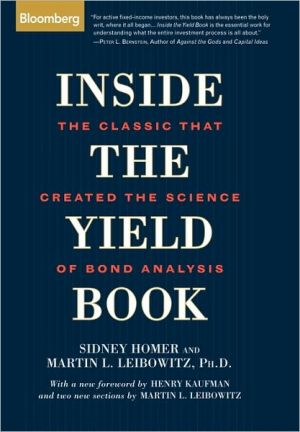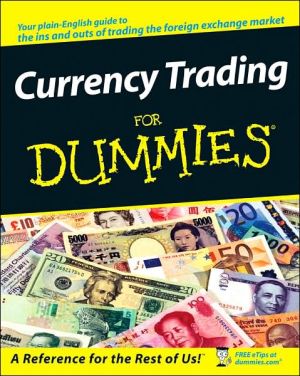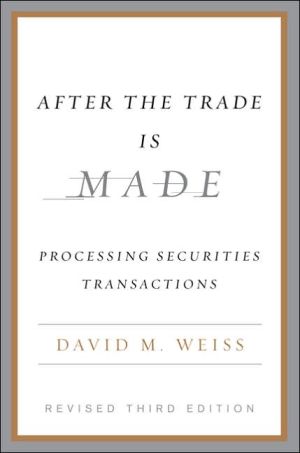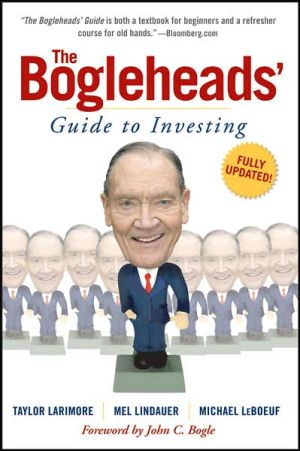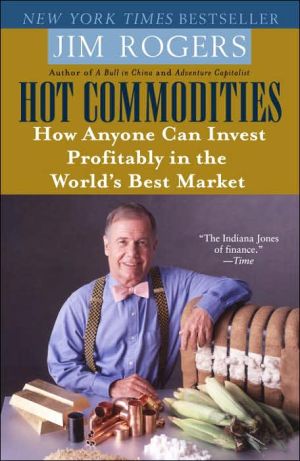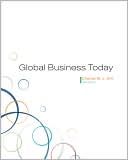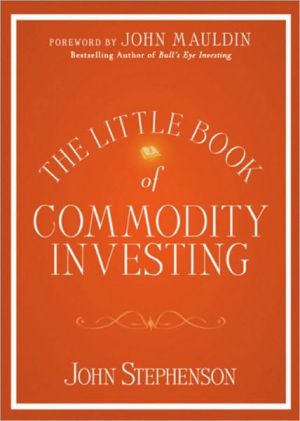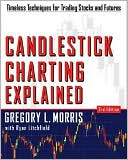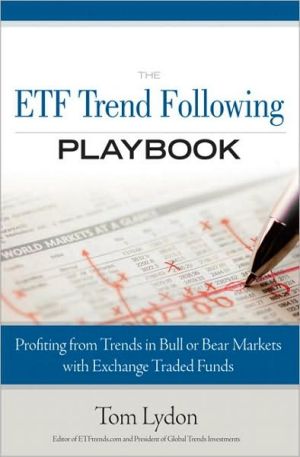Inside the Yield Book: The Classic That Created the Science of Bond Analysis
First published in 1972, Inside the Yield Book revolutionized the fixed-income industry and forever altered the way investors looked at bonds. More than thirty years later, it remains a standard primer and reference among market professionals. Generations of practitioners, investors, and students have relied on its lucid explanations, and readers needing to delve more deeply have found its explication of key mathematical relationships to be unmatched in clarity and ease of application.\ This...
Search in google:
Based on their experience as researchers in the investment industry, Leibowitz' and Homer's (d. 1983) 1972 book revolutionized the fixed-income industry and altered how investors look at bonds; it is here expanded by Leibowitz. The book develops a horizon-based approach to present value and shows how these concepts can be generalized beyond bonds to become useful in analyzing virtually any investment, including equities. No bibliography is provided. Annotation ©2004 Book News, Inc., Portland, OR
Inside The Yield Book\ the classic that created the science of bond analysis \ \ By Sidney Homer Martin L. Leibowitz \ Bloomberg Press\ Copyright © 2004 Martin Leibowitz, Ph.D.,\ All right reserved.\ ISBN: 1-57660-159-5 \ \ \ \ Chapter One\ Interest on Interest \ The recent high level of bond yields and the uncertainty whether yields will be high in the years ahead emphasizes the importance of interest-on-interest, that is to say, the rate at which receipts from coupons can be reinvested in the future. An original investment compounds automatically at the purchase yield only until the funds are paid back in the form of coupons and finally of principal. However, some investors mistakenly expect that a bond purchased at a given yield will always produce that rate as a realized compound yield over the whole life of the bond. If future reinvestment rates during the life of the bond are less than the purchase yield, then the realized compound yield for the whole life of the bond will be less than the purchase yield; if future rates are higher than the purchase yield, then the realized compound yield will be more than the purchase yield.\ Long-Term Par Bonds\ For most long-term bonds, the interest-on-interest is a surprisingly important part of the total compounded return to the bondholder: typically over half.\ Table 1 shows that for an 8% 20-year bond bought at 100 to yield 8%the total return over the twenty-year period may vary from $1,600 per $1,000 invested (4.84%) to $4,832 (9.01%) depending upon whether the interest-on-interest is 0% (interest spent-in a financially non-productive way-as coupons are paid) or 10%. When the reinvestment rate is also 8%, the coupons over the twenty years will total $1,600 per $1,000 invested and the interest on this interest will total $2,201 or 58% of the total return of $3,801. If the rate of interest-on-interest is 6%, the interest-on-interest will decline to $1,416, and the total return to $3,016 per $1,000 invested, bringing the total realized compound yield to the purchaser down from the original 8% to 7.07%. On the other hand, if the rate of interest-on-interest rises to 10%, interest-on-interest will rise to $3,232 and total return to $4,832 per $1,000 invested bringing the total realized compound yield to the purchaser up to 9.01%.\ It follows that a present purchaser of a long-term 8% non-callable bond at 100 is by no means assured of a realized yield of 8% for the life of his investment if by yield is meant interest compounded on the entire original investment for the entire life of the bond: it might turn out to be 6.64% or 9.01 % or more or less, depending on the future trend of bond yields. The uncertainty is entirely confined to the compounding factor. In terms of simple interest, the investor is sure to get 8% from this 8% bond, i.e., $80 a year per $1,000 if the bond is not called or defaulted.\ The Yield Book\ The Yield Book serves the essential function of providing a uniform basis for comparing the market values of bonds having different coupons, maturities, dollar prices and, consequently, different cash flows over their life. To achieve this uniformity, the Yield Book in essence refers every dollar of every bond's cash flow to the standard of an initial investment allowed to accumulate compound interest semiannually at the Yield Book rate until it is paid off in the form of coupon or principal. For example, suppose one has two 20-year bonds, one with a coupon of 8% and the other with a 4% coupon, both priced "to yield 8%." This 8% figure can be taken to mean that both bonds are equivalent to the standard of an 8% semiannually compounded investment, which would realize a return of $3,801 per $1,000 invested over the twenty-year period.\ It is not so well known that to obtain this objective it is necessary that the bonds' coupon income be reinvested so as to gather "interest-on-interest" at a rate exactly equal to the yield-to-maturity itself. The two 8% yield-to-maturity bonds in the above example would realize the standardized 8% return of $3,801 per $1,000 invested only if each and every coupon were itself reinvested at an exact 8% rate. If the coupons cannot be reinvested at the Yield Book rate, then the realized compound yield over the bond's life of the dollars originally invested may vary widely from the Yield Book figure. For this reason, when facing future periods involving possible major swings in yield levels, it becomes vitally important to distinguish between the yield-to-maturity (as stated in the Yield Book) and the realized compound yield that will actually be obtained if the bond is held to maturity.\ Simple Interest vs. Compound Interest\ Many investors, like university endowment funds and foundations and private investors, simply collect and spend their coupons. They tend to ignore the variability of compound interest. Others, like pension funds, accumulate interest receipts, merge them with principal and reinvest them; these are vitally affected by the future rate of interest and ordinarily cannot, when they invest, obtain any assurance as to just what their total return will be.\ Maturity\ As maturity is reduced, the importance of interest-on-interest declines sharply. This is illustrated by Table 2 which shows that for a 1-year 8% bond at 100, interest-on-interest will account for only 2% of total return, while for a 40-year 8% bond it will account for 86% of total return. The uncertainty can be said to be basic only for longer maturities.\ It is obvious, however, that shorter maturities, while reducing or almost eliminating the uncertainty of the rate of interest-on-interest do not solve the problems of maintaining future income. Indeed, the uncertainty is larger with shorter term bonds because in the reinvestment of shorts at maturity the coupon, in addition to the compounding factor, is uncertain. Thus, the old rule will usually hold: if future rates are to rise, shorts bought now will be better than longs; if rates decline, longs will be better than shorts.\ Long-Term Discount Bonds\ Table 3 shows the same calculation for a deep discount bond, a 20-year 4% bond selling at about 603/$ to yield 8%. The top panel shows total return in dollars from one bond, and the bottom panel translates the same figures on the basis of each $1,000 invested, so that the returns can be compared with the 20-year 8% bond in Table 1. Here we find that the variation of total return based on changes in interest-on-interest is also large, but not as large as in the case of the par bonds. This is because the discount (eventual capital gain) is a fixed component of total return that does not vary with future interest rates. When coupon income is a smaller proportion of total return, interest-on-interest must also be a smaller portion of total return. The difference, however, between the par bond and the discount bond is not so large as to provide an absolute guide for selection. If interest-on-interest varies, between 6% and 10%, the total realized compound yield of the 8% bond will vary between 7.07% and 9.01%, while that of the 4% bond will vary between 7.25% and 8.85%. At lower future rates, the 4% bond will yield more than the 8% bond because the fixed discount substitutes for some variable interest; at higher future rates the 8% bond will yield more than the 4% bond because interest-on-interest is a larger component of total return and there is no discount.\ Another way of viewing this effect is to compare the different Yield Book values giving rise to the same realized compound yield under the same reinvestment assumption. For example, the 8% par bond (Table 1) with coupons reinvested at 6% results in a realized compound yield of 7.07%. To obtain this same realized compound yield of 7.07% under the same reinvestment assumption (6%),the 4% coupon bond (Table 3) would have to be priced to yield 7.70% by the Yield Book. In other words, one could "give up" as much as 30 basis points in yield at cost, and the 4% discount bond would still prove to be as good a buy from the standpoint of realized compound yield. This comparison would, of course, not be valid in case of stable or rising interest rates.\ Long-Term Bonds at Lower Yields\ These considerations show that long-term bonds bought a few years ago at yields of 4% to 5% are actually permitting the purchasers to receive a much higher compound yield than the expected rate if the purchasers have been reinvesting their coupons. This is because those lower yields at cost assumed future reinvestment rates of 4% to 5%, while their coupons have recently been reinvested at rates as high as 8% to 9%. Table 4 below is comparable to Table 1 except that the original investment is in a 4% bond at 100 to yield 4%. Discount rates are tabulated all the way from 0 to 10%. It will be seen that the proportion of total return depending on interest-on-interest is exactly the same as that of the 8% bond in Table 1 if the reinvestment rates are the same while, of course, the total returns and yields are very much less.\ Timing of Rate Changes\ In all of the above tables, the future rate of interest-on-interest is stated as one figure which might seem like an average for the twenty-year period, but it is not: It is an artificially fixed rate of reinvestment for all coupons from first to last at the indicated rate assumed by the tables. In real life, rates vary widely from year to year, and a simple average would be fallacious because of the time factor. A low reinvestment rate a year or two after investment followed by higher rates would bring much bigger total interest-on-interest than an early period of high rates followed by low rates. This is because the high reinvestment rate later would earn much more interest from the larger accumulation of funds being reinvested. Thus, the maximum income benefit to today's purchaser would accrue from a rapid rise in interest rates soon after his purchase and thereafter sustained high rates. This, of course, is just the opposite to his profits or losses from principal fluctuations.\ Investment Implications\ (1) The purchaser of long-term bonds who plans to compound his return has not achieved a certainty as to just what his total compounded realized yield will be even if the bonds are non-callable. The area of doubt is perhaps a yield range of 2%.\ (2) Conversely, the purchaser of non-callable long-term bonds who plans to spend his income can count on a predetermined rate of return provided only that the bonds remain in good standing.\ (3) For the compounding investor who expects interest rates to average lower over a long period of years than at time of purchase, there is a structural advantage in discount bonds over par bonds because that part of his return represented by the discount is fixed and cannot decline with interest rates. This advantage is supplementary to other advantages such as superior call protection and (for taxpayers) a lower tax rate. However, these advantages are often offset when discount bonds yield substantially less than high coupon bonds.\ (4) Conversely, for those who expect high or higher interest rates in the years ahead but who are constrained to stay with long-term bonds, there is a structural advantage in par or premium bonds because their total return will rise more rapidly with rising rates. Also, they usually yield more at time of purchase.\ (5) Short-term bonds provide much greater certainty of the compounded rate of return than do long-term bonds, but only for limited periods corresponding to the short-term maturities. Thereafter, because their entire principal amount must be reinvested at the then prevailing rates, the area of uncertainty is very much larger than in the case of long-term bonds.\ (Continues...)\ \ \ \ \ Excerpted from Inside The Yield Book by Sidney Homer Martin L. Leibowitz Copyright © 2004 by Martin Leibowitz, Ph.D., . Excerpted by permission.\ All rights reserved. No part of this excerpt may be reproduced or reprinted without permission in writing from the publisher.\ Excerpts are provided by Dial-A-Book Inc. solely for the personal use of visitors to this web site. \ \
ForewordixPreface to the 2004 Edition: A Historical PerspectivexiiiAcknowledgmentsxxiiiSome Topics That Didn't Make It into the 1972 EditionxxvTechnical Appendix to "Some Topics"lxiiiReferenceslxxiiiInside the Yield Book (Original Edition)1Preface to the 1972 Edition3Contents of the 1972 Edition7List of Tables13About the Authors207
